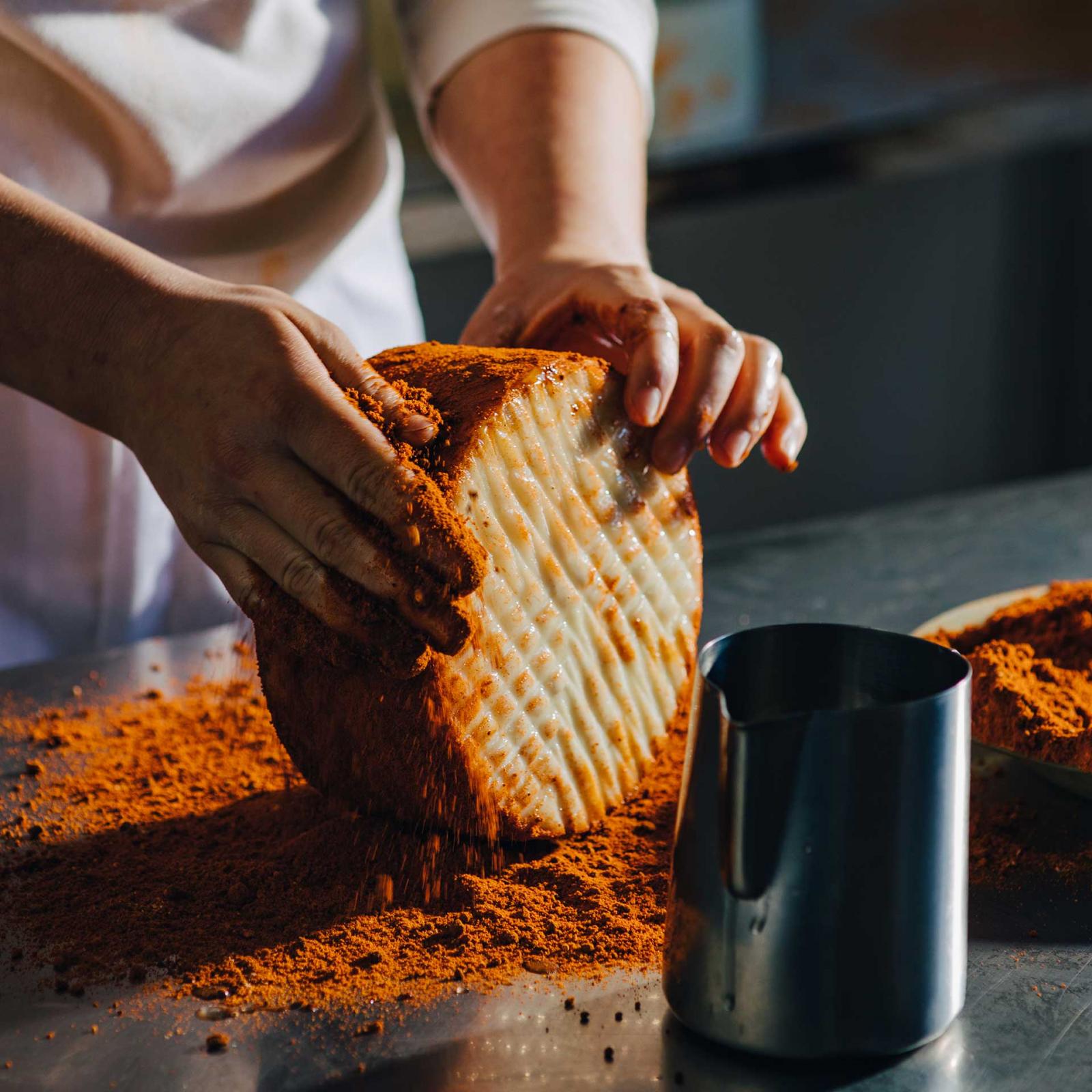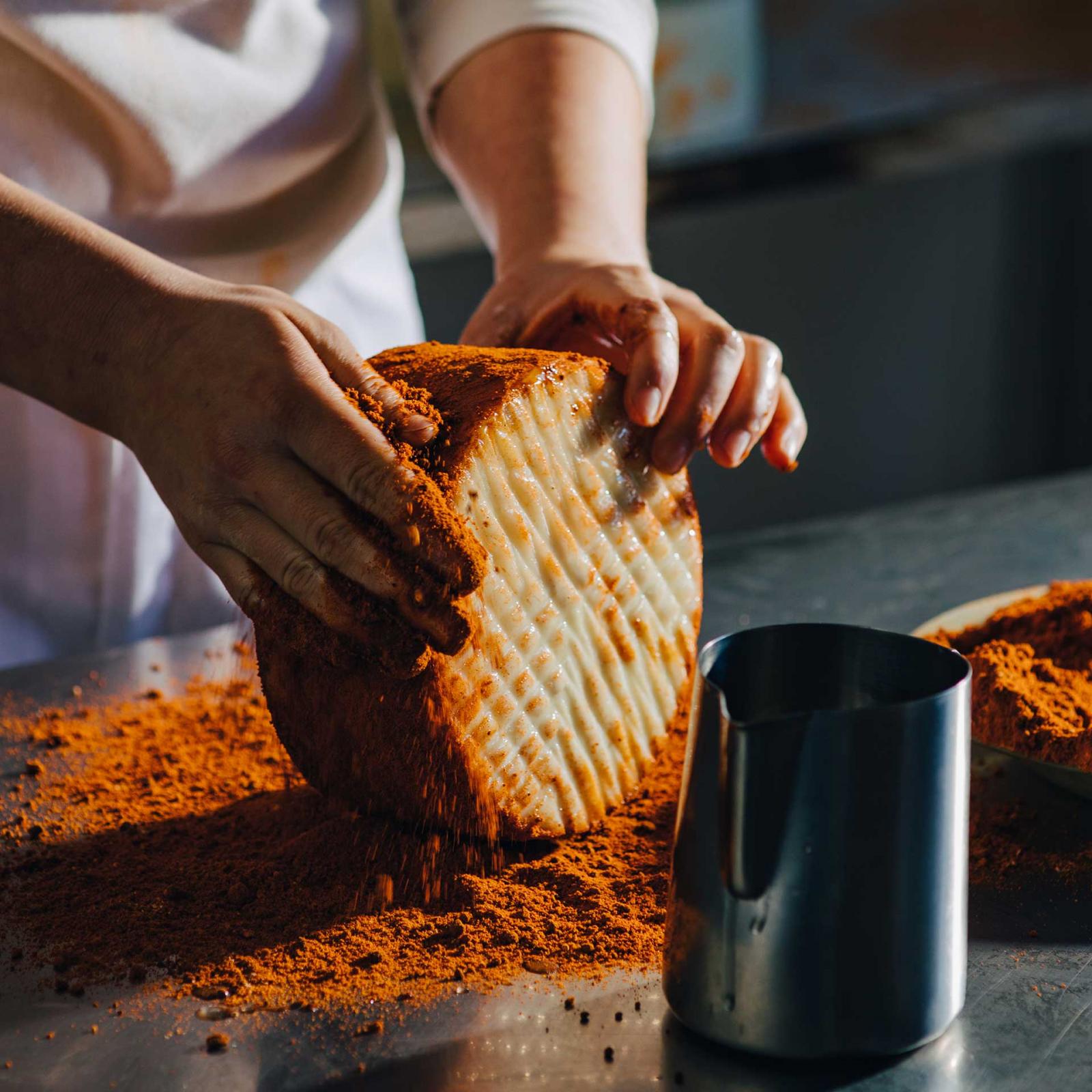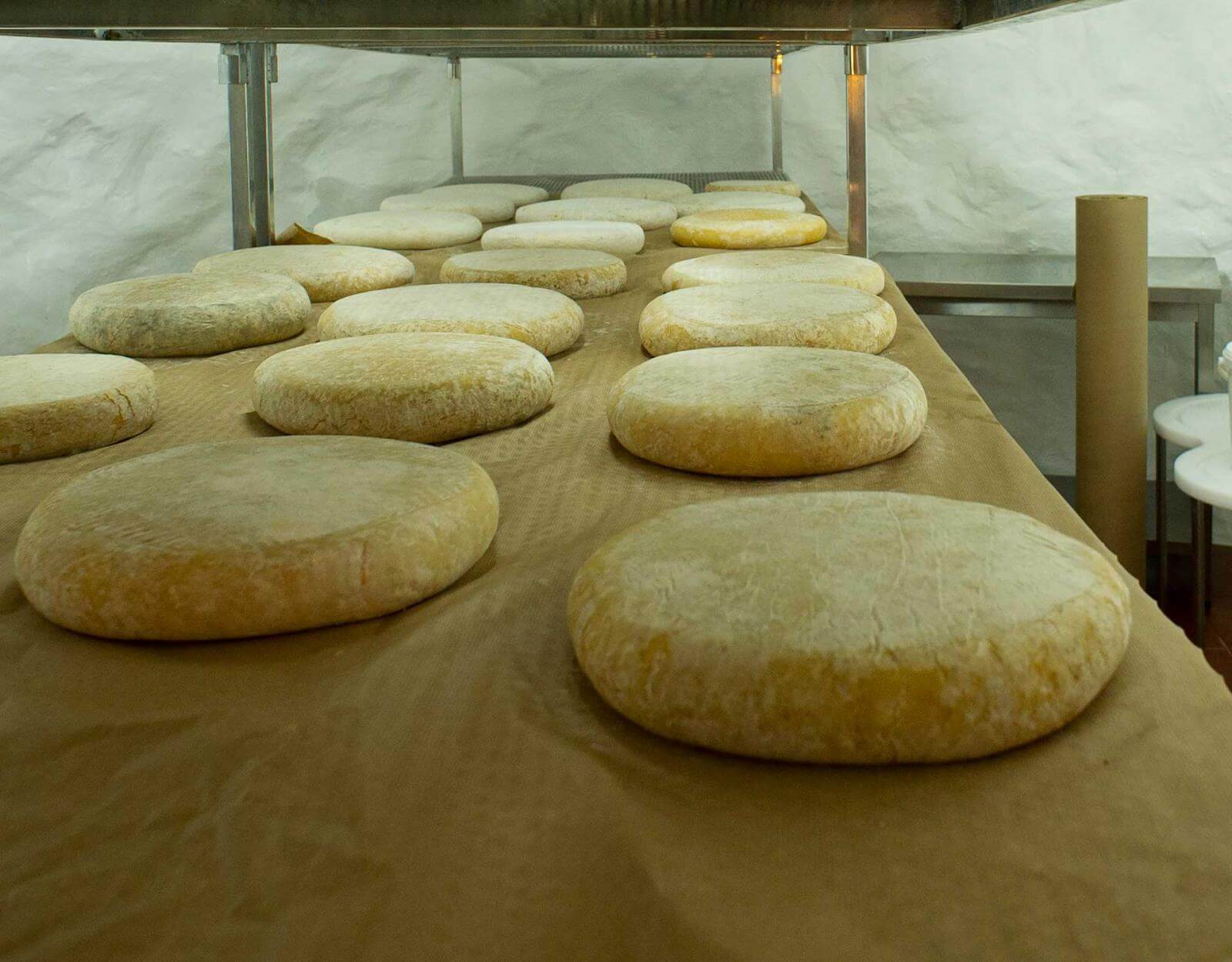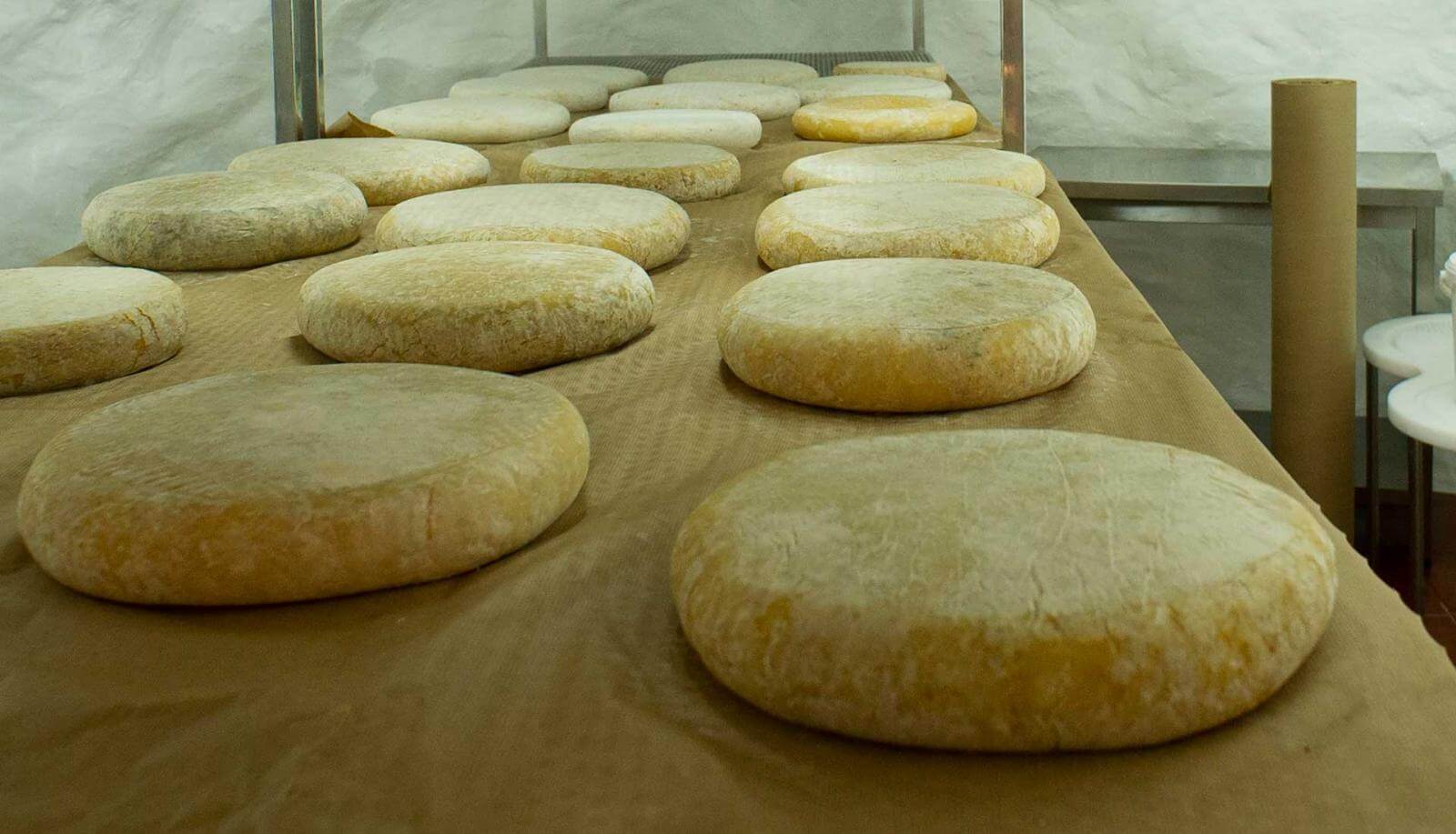The Canary Islands surprise the palate with the wide variety and quality of their cheeses. The archipelago is the Spanish autonomous community that consumes the most cheese per inhabitant, and one of the regions of Europe with the most artisanal dairies per square metre. The cheese-making tradition is a fundamental part of Canarian culture, with ancient customs, like transhumance. There are three protected designations of origin, although delicious varieties of cheese can be found on all the Islands, with unique textures and nuances, and all the flavour of the archipelago.
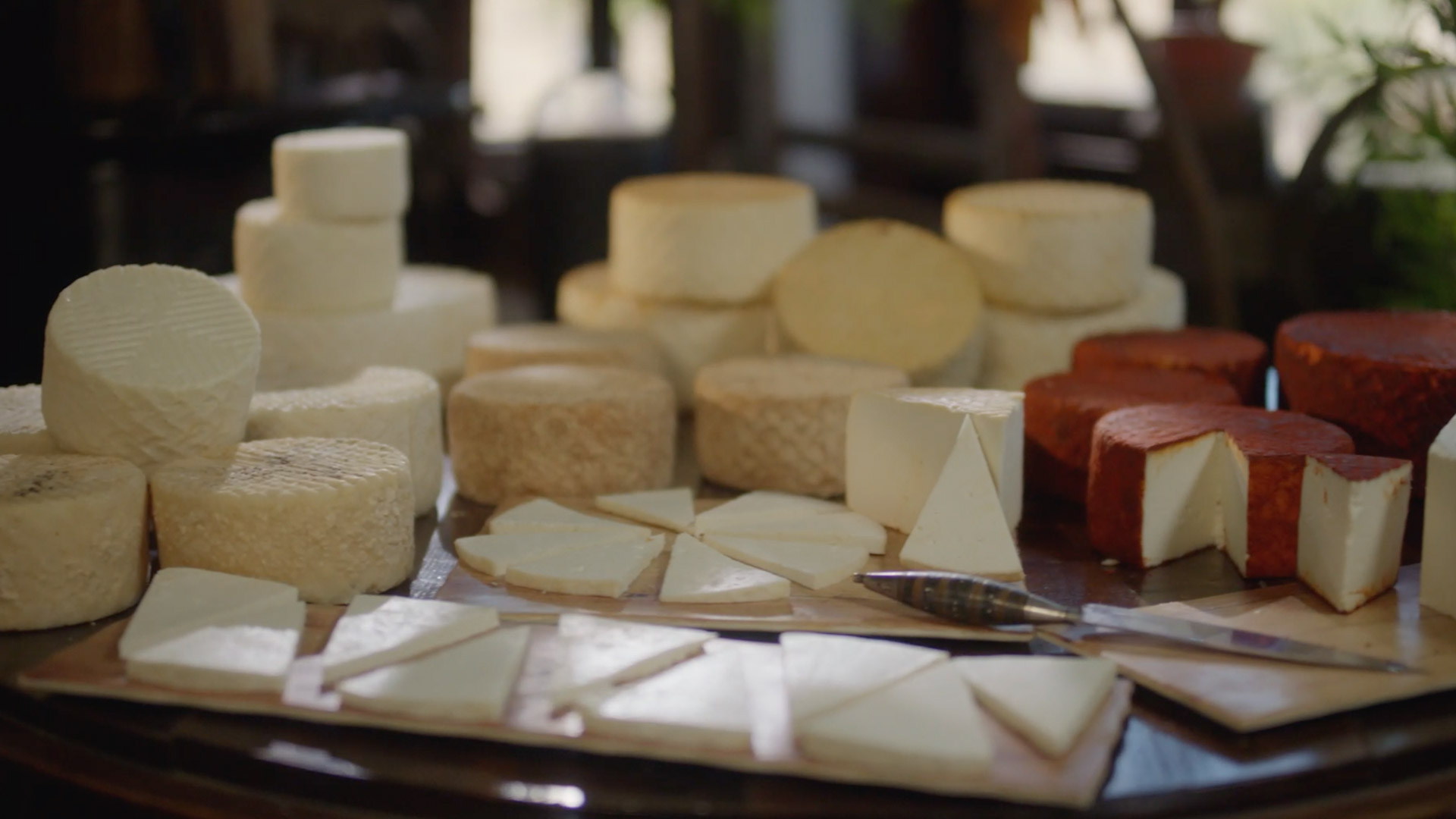

DOP Queso Palmero
Cheese from La Palma, or queso palmero, is a very commonplace ingredient in Canarian dishes like mojo de queso or escachón. It is obtained from the raw milk of the palmera goat, which contains a high level of proteins that contribute to the excellent quality of the cheese. On occasions, these cheeses can weigh up to 15 kilograms, making them some of the largest in the country.

The families of the island have inherited the recipe for this cheese over the centuries, safeguarding the artisanal production process as well. The recipes include one for smoked palmero cheese, when the white cheese acquires dark hues and lightly toasted aromas, the result of the smoking process that uses prickly pear cacti, almond shells and Canary Island date palm. Afterwards, the cheese may be coated with gofio or oil.

DOP Queso Majorero
Queso majorero was awarded Protected Designation of Origin in 1996, situating Fuerteventura among the first Spanish regions to obtain PDO for goat’s cheese.
Although up to 15% of sheep’s milk may be added to it, this cheese is made using full-fat milk from the majorero goat, one of the three autochthonous goat breeds of the Canary Islands (along with the palmera and tinerfeña goats). This autochthonous breed is raised in the arid parts of Fuerteventura, a singularity that transfers the personality and identity of the island to the cheese made from its milk.
When the cheese is soft, it has a mild aroma and flavour, in sharp contrast to the cured cheese, which is also distinguished by a hint of spiciness. The cured and semi-cured cheeses are usually coated in oil, paprika or gofio. The latter two ingredients give the cheese a very special touch, especially the paprika, which covers the rind with a reddish tone.
We can recognise a majorero cheese at a glance by the rhombus motif that is traditionally imprinted on the sides of the cheese rind. This effect is achieved by placing the wet cheese paste in a mould designed with the pattern of a plaited palmetto leaf taken from the Canary Island date palm.

DOP Queso de Flor de Guía
It was traditional for artisans and traders to meet up in the Plaza Grande of the village of Guía, in Gran Canaria, to sell their cheese, hence the name given to this protected designation of origin (queso de Flor de Guía, queso de Media Flor de Guía and queso de Guía), which is produced in the municipalities of Santa María de Guía, Gáldar and Moya on Gran Canaria.
Flor de Guía cheese is made using Canarian sheep’s milk, to which a lesser amount of cow’s milk and goat’s milk may be added. It is a creamy, fatty, mild and elastic cheese that surprises the palate with a subtly bitter flavour.
During April and May, artisanal cheese producers gather the thistle flower that they will use to macerate the cheese when the time comes. This is the only cheese on the Canary Islands to be made with vegetable rennet. As well as this particularity, another feature is the rich grazing lands where the sheep are raised, full of aromatic pastures with properties that are reflected in the animals’ milk.
Delicious cheeses on all the Islands
The exceptional nature of the indigenous cheeses of the Canary Islands is revealed by the numerous tasting sessions held in the archipelago, which are in themselves an opportunity to discover the different Canarian cheese varieties and take a moment to experience them with all five senses.



